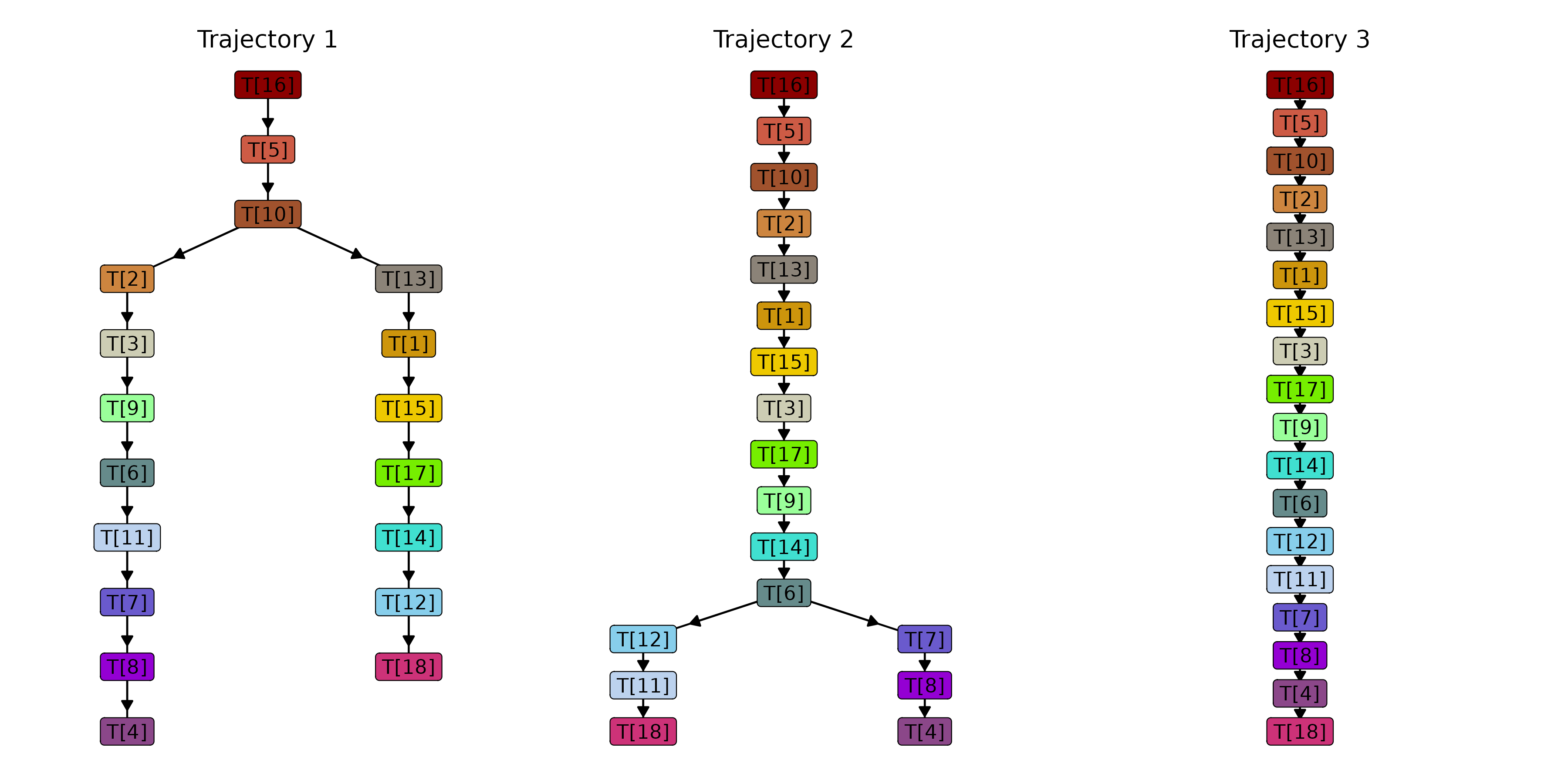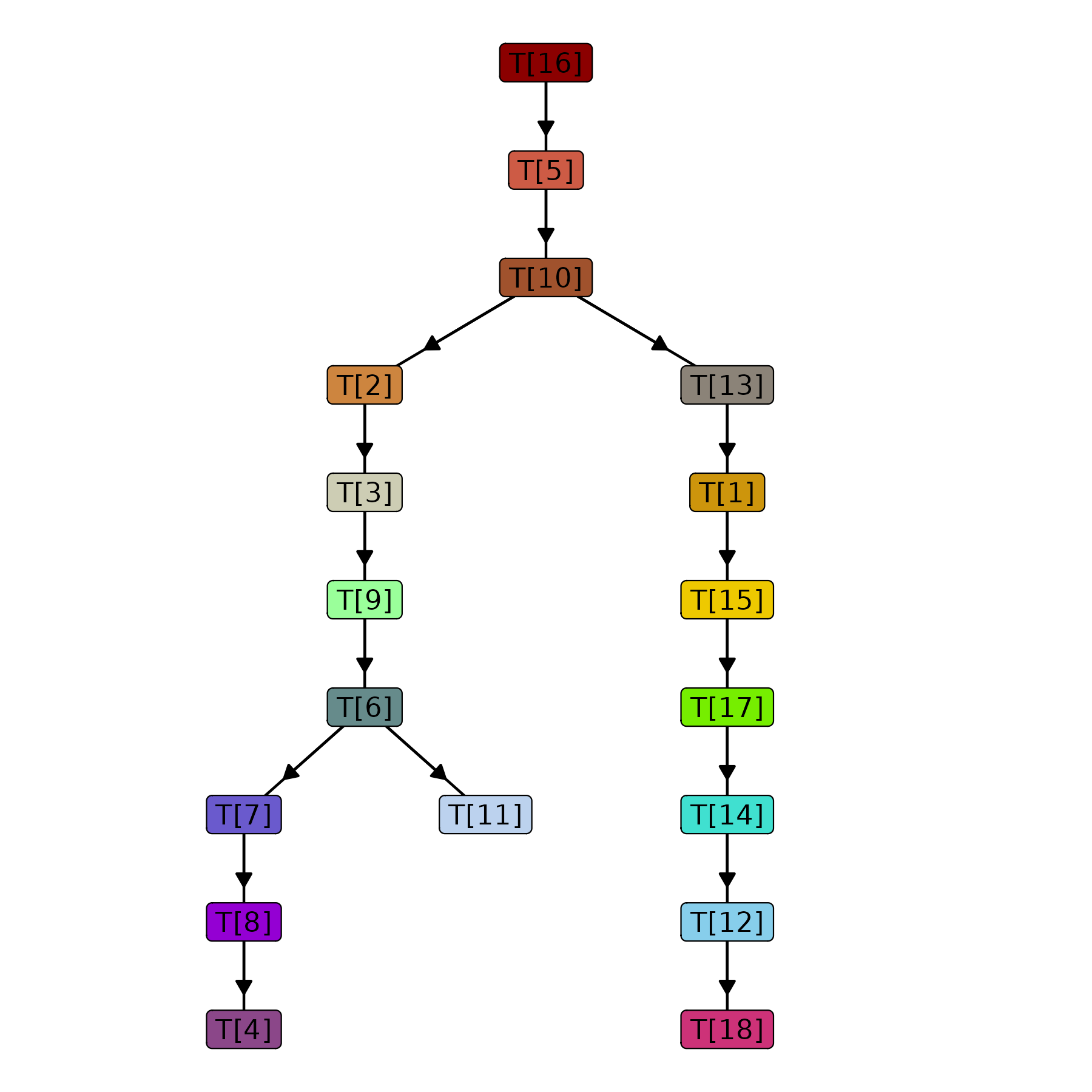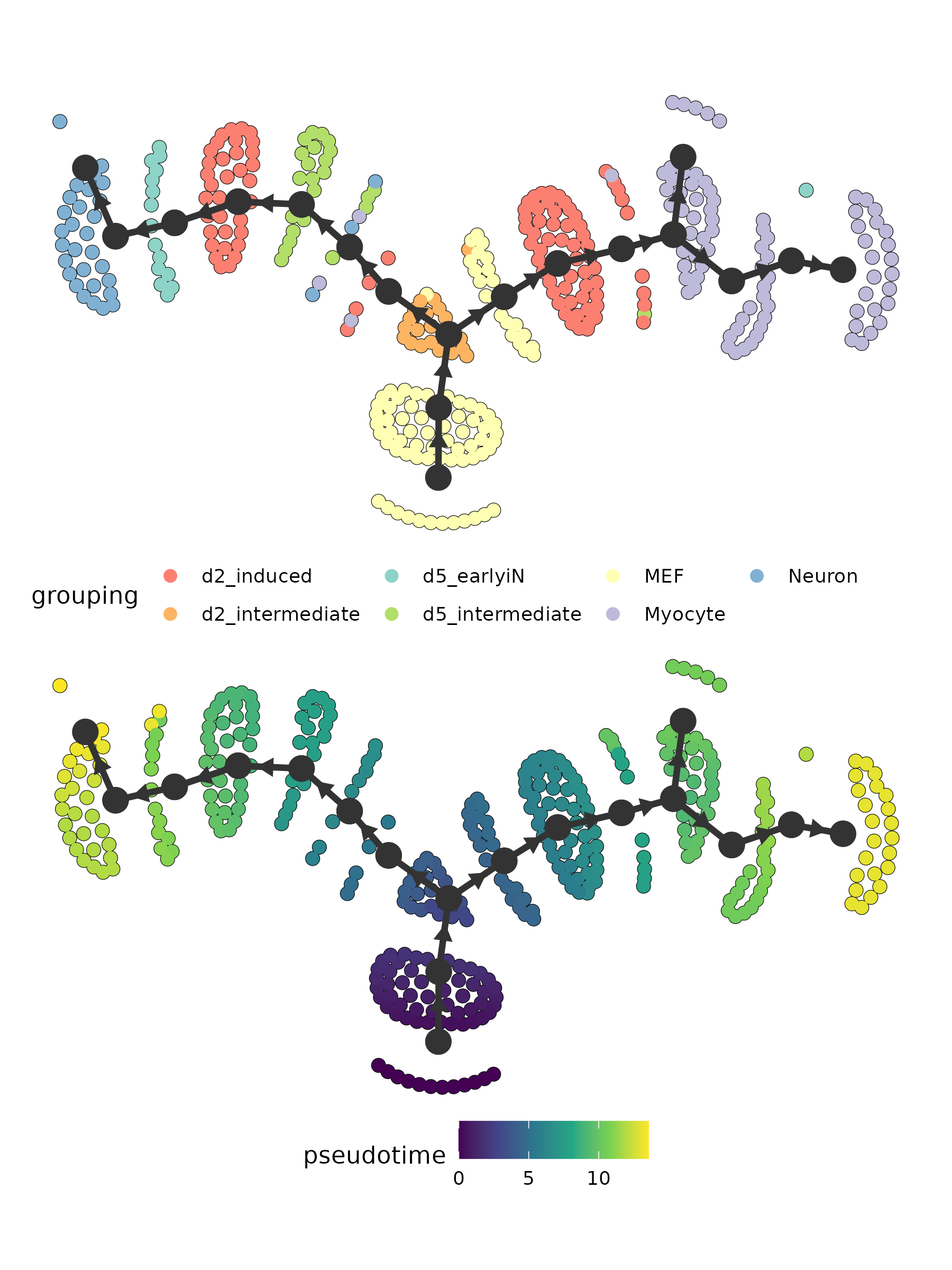A Docker container dedicated to running MGPfact. The container is built on Saelens's trajectory prediction evaluation system and includes an integrated trajectory reconstruction process based on factorization, incorporating the execution code of MGPfact.jl and MGPfactR, capable of generating trajectory visualizations for linear, binary tree, and multi-branch binary tree.
If you want to use the full functionality of MGPfact, please proceed to MGPfactR.
docker pull renjun0324/ti_mgpfactlibrary(dynwrap)
library(dynmethods)
library(dyntoy)
library(tidyverse)
library(purrr)
library(dyno)
load("test/fibroblast_reprogramming_treutlein")
# Encapsulate the expression matrix
dataset_wrap <- wrap_expression(
counts = fibroblast_reprogramming_treutlein$counts,
expression = fibroblast_reprogramming_treutlein$expression
)
# If you don't want to set a root node, you can assign the `start_id` to a cell name that doesn't exist in the expression matrix or to any arbitrary string, such as 999
dataset_wrap = add_prior_information(dataset_wrap, start_id = c("1_iN2_C82"))
# create ti container
ti_mgpfact = create_ti_method_container("renjun0324/ti_mgpfact")
# running model
model = infer_trajectories(dataset_wrap,
ti_mgpfact(),
parameters = list(dataset_id = "myproject",
max_murp = 20,
trajectory_number = 3,
murp_pc_number = 3,
murp_pca_center = as.logical(FALSE),
murp_pca_scale = as.logical(FALSE),
iterations = 100,
chains_number = 3,
trajectory_type = "binary_tree",
binary_tree_index = 2),
verbose = TRUE,
return_verbose = TRUE,
debug = FALSE)
save(model, file = "model.rda")
When reconstructing trajectories, we can determine the type of output trajectory by changing the trajectory_type. We provide four types, namely linear, binary_tree, consensus_tree, and consensus_tree_projection. Each type of trajectory can be plotted using the functions provided by dynplot.
model_p = model$model[[1]] %>%
add_dimred(dyndimred::dimred_mds,
expression_source = dataset_wrap$expression)
p1 = plot_topology(model_p) + guides(fill = "none", color = "none") + theme(plot.margin = unit(c(0.1,0.1,0.1,0.1), "cm"))
p2 = plot_onedim(model_p, label_milestones = FALSE) + guides(fill = "none", color = "none") + theme(plot.margin = unit(c(0.1,0.1,0.1,0.1), "cm"))
p3 = plot_graph(model_p, label_milestones = TRUE) + guides(fill = "none", color = "none") + theme(plot.margin = unit(c(0.1,0.1,0.1,0.1), "cm"))
p4 = plot_dimred(model_p) + guides(fill = "none", color = "none") + theme(plot.margin = unit(c(0.1,0.1,0.1,0.1), "cm"))
p = wrap_plots(list(p1, p2, p3, p4), nrow = 1)
ggsave("trajectory.png", p, width = 15, height = 5)MGPfact can extract different differentiation processes from the same data through factorization. We can output different trajectories based on the binary_tree_index. However, due to the limitations of the docker container, if we reconstruct three differentiation trajectories, we need to run it three times to get the results for three trajectories.
The consensus trajectory representing the process of data differentiation
Two-dimensional spatial embedding representation of consensus trajectory.



